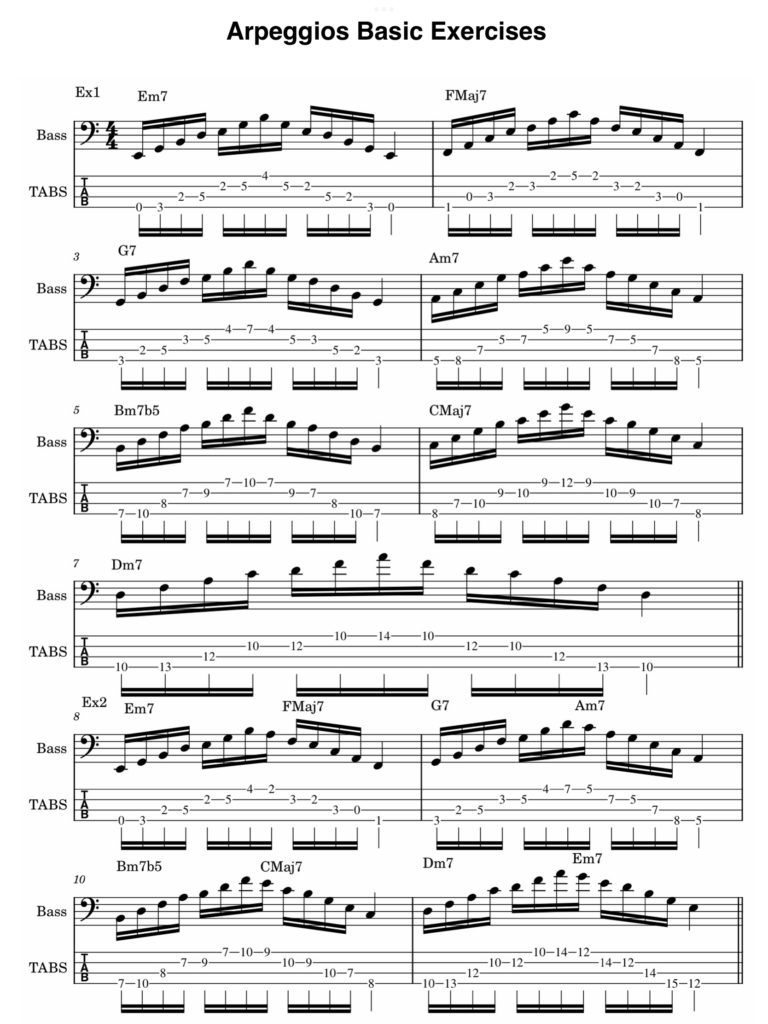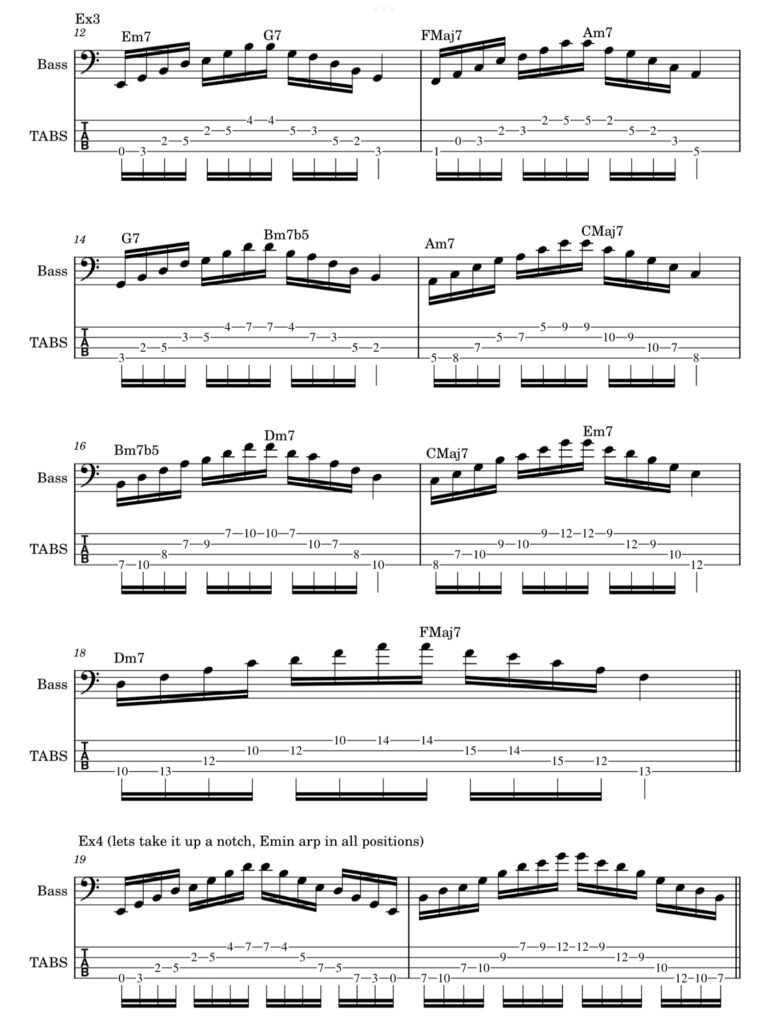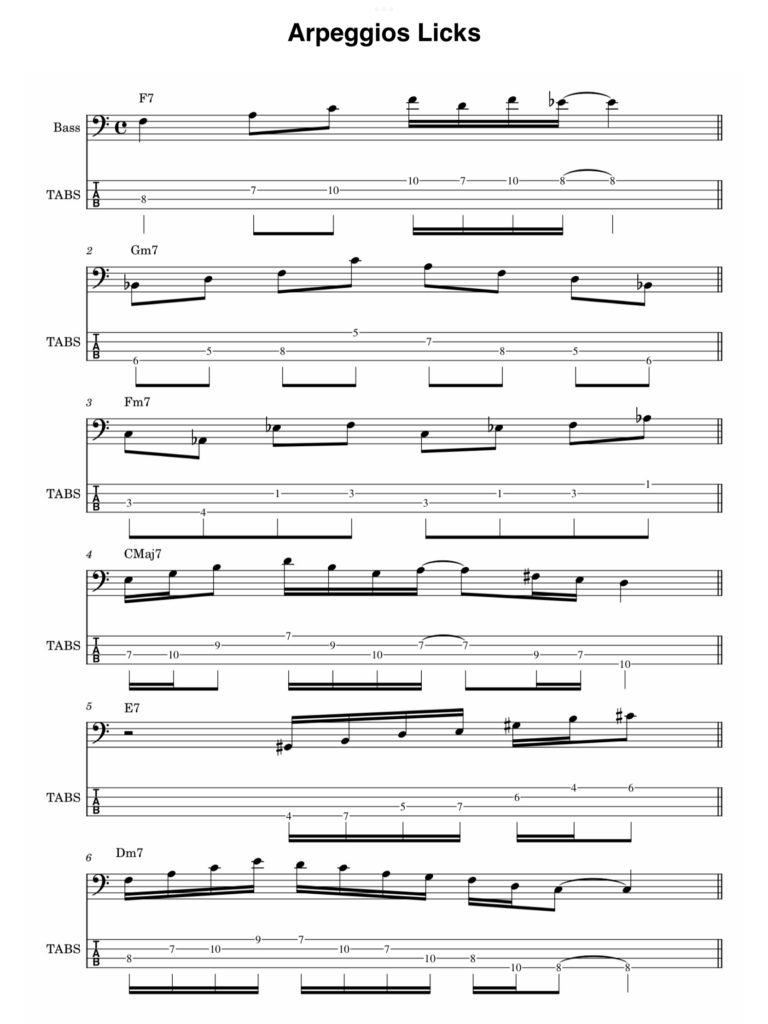Understanding Arpeggios
Diatonic arpeggios are more than just scales; they’re the building blocks of music and bass playing. As a bass player, understanding arpeggios is crucial for mastering the subtleties of each chord in any song. Arpeggios are a type of broken chord. While triads include the first, third and fifth notes of a scale, arpeggios extend this pattern by including the seventh note, adding a melodic aspect to the chord.
Applications of Arpeggios
Arpeggios can be played starting from each note and superimposed over different chords. They are vital for outlining the chords of any song, useful in fills and solos, and serve as pick-up notes into melodic phrases. Additionally, using arpeggios in bass lines clarifies the sound of a chord. This versatility makes arpeggios an essential practice area for bassists.
Technique Building with Arpeggios
Like all the other Fret Trainer exercises, practicing arpeggios is excellent for building your technique. To effectively use arpeggios for any triad and scale, break down and rearrange them. Don’t forget to experiment with different rhythms and fingering options to enhance your flexibility and expression on the bass guitar.
Important Considerations
When it comes to superimposing arpeggios over chords, the choice of arpeggio can dramatically affect the harmony. For example, over a G7 chord, you would typically play its relative G Major arpeggio. However, a Dm7 arpeggio played over the same chord implies the 5th, 7th, 9th, and 11th tones, enriching the chord’s complexity. We will explore this topic in more detail in future posts.
Creative Applications
I encourage you to craft your own musical phrases using arpeggios, moving beyond conventional patterns to explore fresh ideas. By demonstrating how arpeggios enhance bass lines and fills, we aim to spark your creativity. Remember, arpeggios are foundational music blocks, whenever you hear a melodic piece, arpeggios are likely at play.
Practical Application
Take a groove you enjoy and apply all the concepts you’ve practiced. Start by exploring low, medium, and high positions of the triad on your bass and play through the exercises provided.






